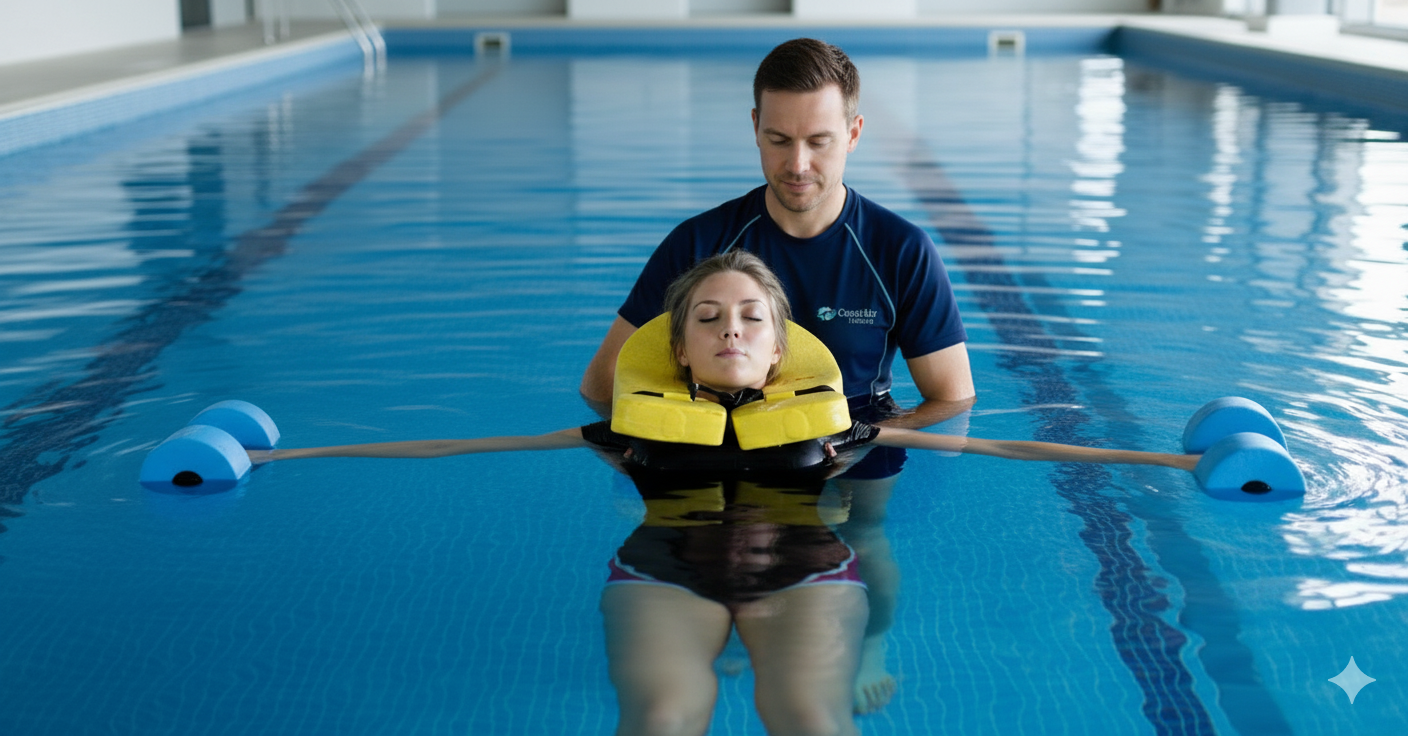Hydrotherapy for people with disability: how water helps movement, pain and independence
Hydrotherapy (aquatic physiotherapy) uses the unique properties of water — buoyancy, hydrostatic pressure, warmth and gentle resistance — to make movement easier, safer and often more effective than land-based therapy alone. It’s especially valuable for people with disability because it reduces weight-bearing, supports balance retraining, and lets clinicians progress strength and function with less pain and fear of falling. australian.physio+1
Key benefits
1. Less pain, better function for joint conditions
Aquatic exercise reduces joint loading while enabling movement and strengthening. Systematic reviews show improved pain and physical function for people with knee and hip osteoarthritis after aquatic programs. cochrane.org+1
2. Improved balance and mobility after stroke
Meta-analyses of randomized trials report that water-based therapy can improve balance, gait and functional independence in people after stroke, often as effectively as land programs and sometimes better for early balance gains. SAGE Journals+1
3. Useful for neurological conditions (eg. MS, spasticity)
Reviews of aquatic therapy in multiple sclerosis show benefits for walking ability, quality of life and reduction in spasticity in a number of trials — making hydrotherapy a recommended option in rehabilitation plans for many people with MS. livewisems.org+1
4. Helpful for chronic low back pain and other pain conditions
Systematic reviews and meta-analyses report reduced pain intensity and improved disability scores after aquatic physiotherapy programs for chronic low back pain. Water allows graded activation of trunk and hip stabilisers with less provocation of pain. BioMed Central
5. A safe, confidence-building environment for balance and transfers
The buoyancy and warmth of therapeutic pools let therapists practice transfers, weight-shifts and reactive balance in a supported way. This can translate into safer function on land and greater confidence for daily tasks. (Clinical aquatic guidelines and hospital protocols describe these principles and safe practice standards.) Schn Resources+1
Who benefits most?
Hydrotherapy is often appropriate when land-based exercise is limited by pain, weakness, balance problems, or when a participant benefits from gentle progressive resistance. Common groups who benefit include:
People with osteoarthritis or chronic joint pain. cochrane.org
Stroke survivors working on balance and gait. SAGE Journals
People with neurological conditions such as multiple sclerosis, cerebral palsy or spasticity where water reduces tone and improves mobility. livewisems.org
Individuals recovering from orthopaedic surgery (early rehab) or with chronic low back pain. BioMed Central
How hydrotherapy works (the short science)
Buoyancy reduces effective body weight so joints and pain-sensitive tissues are unloaded.
Hydrostatic pressure supports circulation and can reduce swelling while providing sensory feedback.
Warmth relaxes muscle guarding and improves tissue extensibility.
Viscous resistance gives smooth, graded resistance through movement — excellent for progressive strengthening. onlinelibrary.wiley.com
Practical considerations & safety
Qualified supervision: Hydrotherapy should be delivered by clinicians trained in aquatic physiotherapy (Australian guidelines recommend specific competencies and pool protocols). Pools are usually kept ~32–36°C for therapeutic programs. australian.physio+1
Screening & consent: Pre-session screening, risk assessment (falls, cardiorespiratory issues), and informed consent are essential.
Pool access & funding: Hydrotherapy can be funded through NDIS when it’s clinically justified, delivered by a qualified allied-health professional, and clearly linked to participant goals (eg. Improved Daily Living). Check the participant’s plan and NDIA/plan manager requirements before booking. NDSP Plan Managers+1
What to expect in a typical course
A therapist will usually: assess function on land, set goals with the participant, run 30–60 minute water sessions that progress balance, strength and transfers, and provide a land-based transfer and therapy plan so improvements translate to daily life. Many programs run 6–12 weeks, then re-assess for next steps. Evidence-based programs tend to be supervised, progressive, and tailored to individual goals. MDPI+1
How we use hydrotherapy at Function 2 Freedom
At Function 2 Freedom I combine land and water assessments to create a personalised program — we prioritise safety, measurable functional goals (transfers, walking, stairs, car access), and handover to carers or support coordinators so improvements stick. If hydrotherapy is relevant to your NDIS goals, I can provide assessment notes and a justification you can include in your plan or referral.
Want this for your client or plan?
If hydrotherapy sounds like it could help you or someone you support, please get in touch — I’ll discuss suitability, pool options, and how to include it in NDIS plans. Book a hydrotherapy assessment or referral by clicking here or email me at max@function2freedom.com.au.

